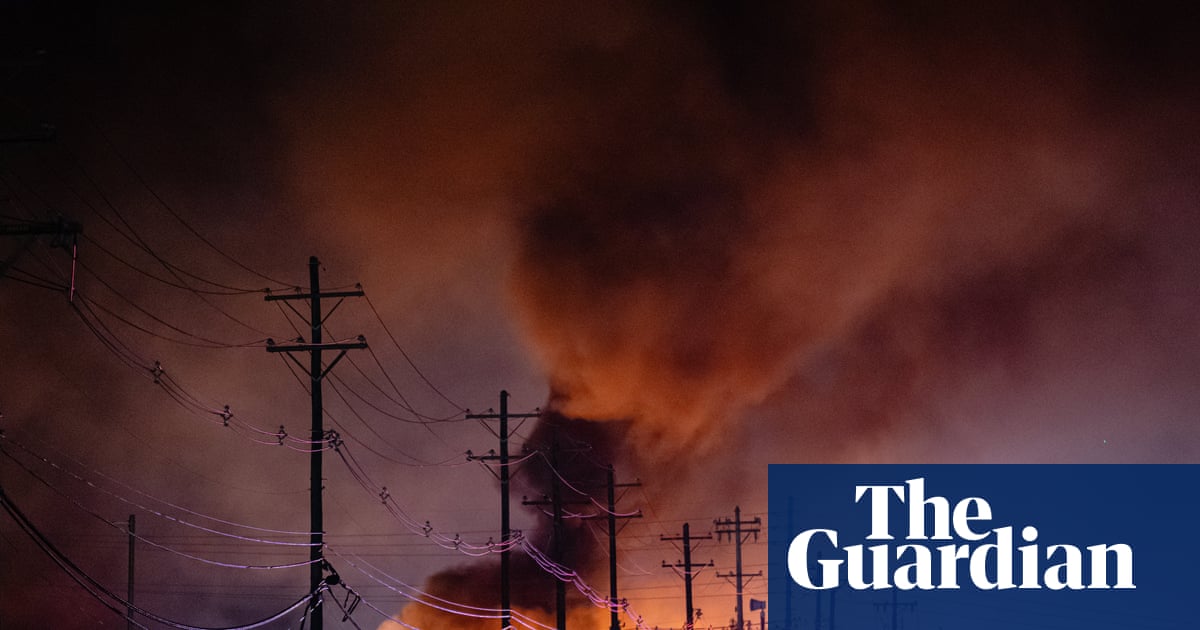Water companies and the government are drawing up emergency plans for a drought next year more extreme than we have seen in decades.
Executives at one major water company told the Guardian they were extremely concerned about the prospect of a winter with lower than average rainfall, which the Met Office’s long-term forecast says is likely. They said if this happened, the water shortfall would mean taking drastic water use curtailment measures “going beyond hosepipe bans”.
Droughts are usually multi-year events. While much of England went into drought this summer, with hosepipe bans across large swathes of the country, things were not as bad as they could have been because it had been a rainy autumn and winter the year before. This meant reservoirs were full and that groundwater – storage of water under the soil – was charged up.
But months of record dry weather meant a lot of that water was used, and it has not been replaced, despite roughly average September and October rainfall. Average reservoir storage is at 63.3% compared with the average of 76% for this time of year. Ardingly, in West Sussex, and Clatworthy and Wimbleball in Somerset, are below 30%.
Groundwater takes significantly longer than reservoirs to recharge, and the situation in England is still fragile despite recent rainfall; South East Water has applied for a local water restriction order, which would ban some businesses from using water for certain things, such as cleaning buildings and equipment or filling hotel pools.
Alastair Chisholm, the director of policy and external affairs at the Chartered Institution of Water and Environmental Management, said: “In UK drought management terms, a second dry winter is when things start to get serious. So Met Office warnings of increased risk of dry spells through an important time of year for recharge of our water resources will ring alarm bells. This, coupled with dry weather next spring and summer will mean more drought orders – more abstraction from rivers when they’re at low levels, more hosepipe bans and likely restrictions on some business water use.”
England has a lack of water resilience, with a growing population, higher risks of hot, dry summers and the fact no new major reservoir has been built in more than 30 years. This means that the country is reliant on consistent rainfall to keep taps running, and when we do not get it, rivers have to be sucked dry and hosepipe bans imposed.
Chisholm said building new reservoirs was not enough, and that water efficiency measures for businesses and homes could be taken very quickly, for example by stopping leaks, more widespread smart metering and ensuring water-efficient appliances were installed in new homes.
He said: “Whilst government has been fixated on announcing new reservoirs it’s been far less proactive or ambitious on its water efficiency policies. Reservoirs will take decades to build whilst water users can be supported to reduce their consumption quickly. This is nonsensical. It’s not an either-or question on these. We’re a densely populated nation facing increasingly extreme and variable weather, with growing water demand to support new homes, datacentres, food production and more. Without new reservoirs and leakage reductions alongside ambitious water efficiency and domestic or development-level rainwater harvesting and reuse, droughts are likely to become a growing problem for the UK.”
The drought is expected to continue into next year. If that happens, and we have a spring and summer with below-average rainfall, England runs a risk of running out of water.
The Met Office’s chief meteorologist, Dr Will Lang, said: “This year has been characterised by notable rainfall deficits across much of England. By 28 October, provisional data shows England had only 61% of its expected annual rainfall, when we’d normally have about 80% at this time of the year (based on 1991–2020 average).
“Looking ahead, there is an increased risk of dry spells through late autumn and early winter and regional differences in rainfall continue to be likely. Without sustained and widespread precipitation, a consistent recovery from drought remains uncertain.”
Water minister Emma Hardy said: “We are closely monitoring all regions – especially those still experiencing drought – and working with the National Drought Group and water companies to maintain supplies. We face increasing pressure on our water resources. That is why this government is taking decisive action, including the development of nine new reservoirs to help secure long-term water resilience.”
Hydrologists are alarmed by the extent of the drought and the very real possibility it could cause problems next summer. The strategy of waiting for significant rain carries big risks.
Prof Hannah Cloke, a professor of hydrology at the University of Reading, said: “We now need exceptional rainfall all winter just to recover. Even with recent improvements in some areas, many drought orders and hosepipe bans are staying in place. That tells you how serious the water resource deficit really is. Some reservoirs are sitting at less than a third of their capacity, which is alarming at this point in the year.
“With climate change drying Britain out for longer periods in the future, we need to adapt to the climate we have now. Building new reservoirs will help, but we also need much more management of demand, and a more ambitious plan for water resilience.”
Dr Megan Klaar, associate professor in the School of Geography at the University of Leeds, said: “We know that climate change is making rainfall patterns more variable, with longer dry periods and more intense wet periods. This growing volatility makes it harder to plan or foresee with certainty making the reliance on rain to arrive ‘just in time’ an unreliable strategy.”
There are actions the country could take now, she said: “Nature-based solutions including restoring wetlands, reforesting catchments and improving soil health all help retain water in the landscape and slow its movement through river systems. Households can also help by reducing water use, especially during dry periods, and slowing and storing water during high rainfall by replacing impermeable surfaces like concrete and installing water butts to collect rainwater from roofs which stores water locally and reduces runoff during heavy rainfall.”

 3 hours ago
9
3 hours ago
9

















































